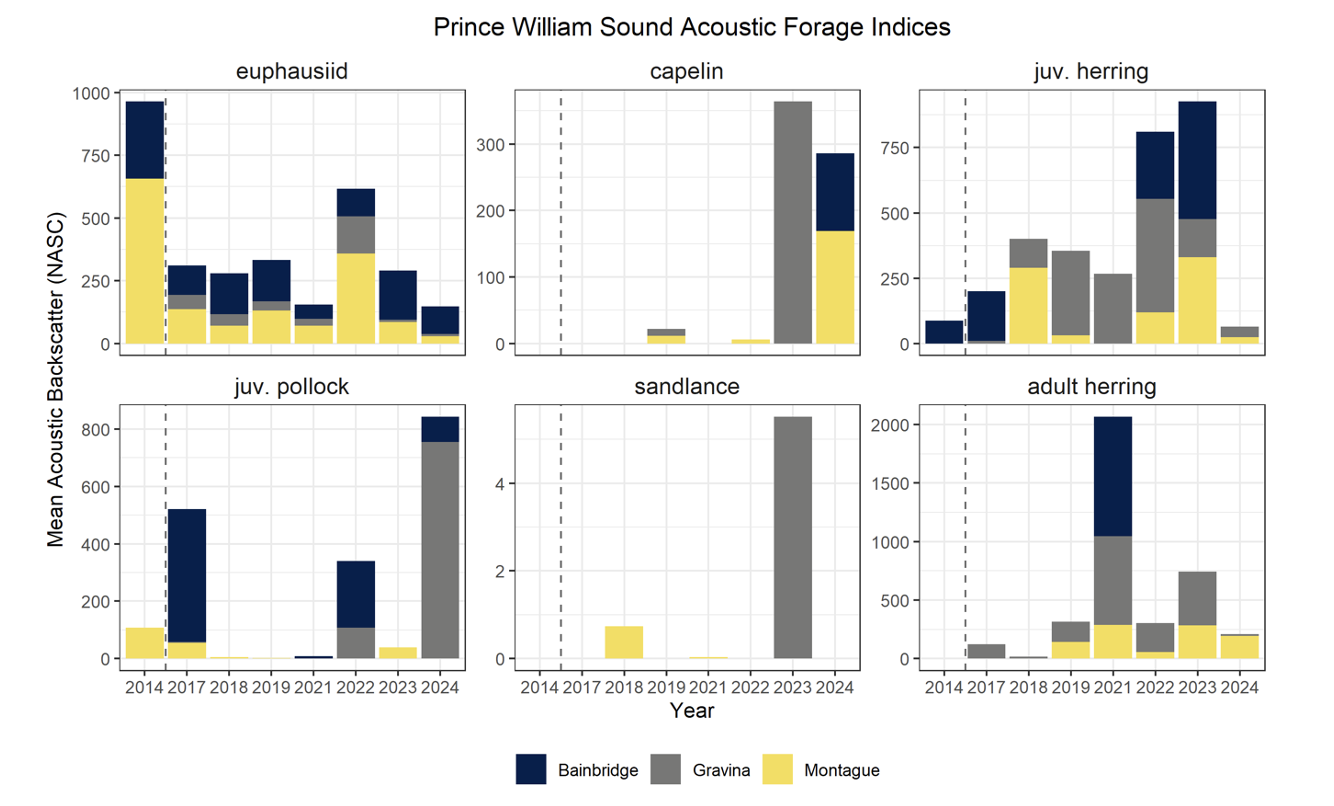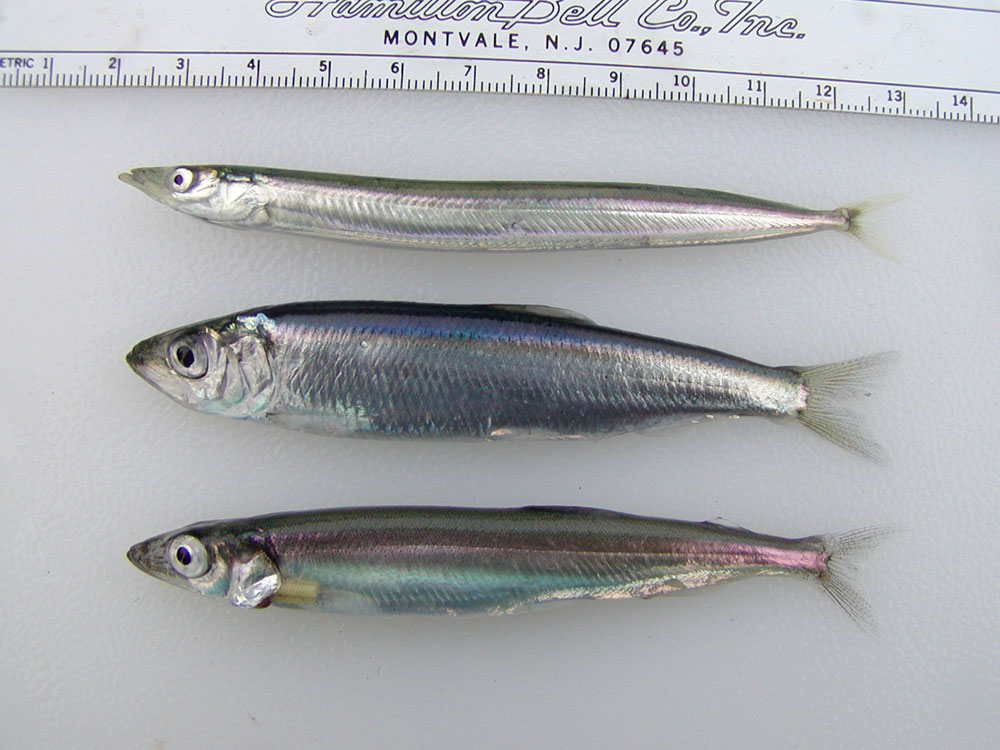A million-strong we cling
to avoid the searching maw
Do seabirds smell our fear?
Why are we sampling?
Changes in the abundance of forage fish (small, schooling fish that are the prey species of larger fish, marine birds, and marine mammals) can have dramatic effects in marine ecosystems because much of the energy transferred from lower to upper food web levels passes through these species. Forage fish typically produce a large number of offspring and have short lifespans, meaning their abundance and distribution can fluctuate dramatically in response to environmental variation. The response of animals that prey on forage fish to fluctuations in forage fish abundance depends on the predator’s ability to shift its foraging behaviors and the relative nutritional value of each species of forage fish and other types of prey in their diet.
Where are we sampling?
Our study includes surveys throughout Prince William Sound and a seasonal monitoring station on Middleton Island in northern Gulf of Alaska. More information about ongoing seabird monitoring and research is available at: https://middletonisland.org/.
How are we sampling?
The primary objectives of the forage fish monitoring project are to: 1) monitor the status and trends of forage fish in areas with known persistent aggregations of predators and prey during fall, and 2) support annual field and laboratory efforts to continue the Middleton Island long-term seabird diet index in spring/summer, 3) assess changes in forage fish abundance indices on acoustic-trawl surveys during summer, and 4) support Herring Research and Monitoring program aerial survey validation efforts in summer.
To meet our first objective, we integrate directly with the humpback whale and marine bird predation studies to provide estimates of forage biomass in the immediate vicinity of predator aggregations. To meet our second objective, in a collaboration with the Institute for Seabird Research and Conservation, we use seabirds as samplers of forage fish at Middleton Island to continue the long-term seabird diet data collection program as a cost-effective means to monitor forage fish stocks in the northern Gulf of Alaska. To meet our third objective, we conduct multi-frequency hydroacoustic transects and trawls to identify species composition and size distributions of ensonified targets. To meet our fourth objective, we sample fish schools from a vessel on the water under the direction of the aerial survey team to validate their observations.
What are we finding?
The acoustic fish and macrozooplankton indices reveal interannual variability in abundance. Results showed an increase in acoustic indices of capelin in Montague and Port Gravina compared to previous years, and juvenile walleye pollock indices were unusually high in Port Gravina. However, acoustic backscatter of euphausiids was lower across all regions compared to 2023, and both juvenile and adult herring biomass indices were down from previous years. Notably, sand lance were not detected in any of the surveyed regions during 2024.

Interannual variability of acoustic backscatter indices by forage species. Acoustic indices derived from Integrated Predator-Prey surveys in three regions within Prince William Sound.

Interannual variation in diet composition of black-legged kittiwakes during spring (top) and summer (bottom) on Middleton Island.
From April to August 2024, researchers collected a total of 1,181 diet samples from black-legged kittiwakes and 311 samples from rhinoceros auklets at Middleton Island. In the spring, kittiwake diets were dominated by myctophids, with GPS tracking data indicating offshore foraging beyond the continental shelf. Capelin appeared far less frequently in spring kittiwake diets compared to 2023, but became a major component in their summer diets. Capelin also increased in the diets of rhinoceros auklet chicks in 2024, reflecting a broader regional recovery of the species following a population collapse during the marine heatwave. This resurgence is supported by trends in seabird diets at other Gulf of Alaska colonies and acoustic surveys near Kodiak. In contrast, sand lance showed a continued decline in seabird diets by 2024 after peaking in the late 1990s and briefly rebounding in 2016. This downward trend was evident in both spring and summer kittiwake diets as well as in summer auklet diets and matched patterns observed at other Gulf of Alaska colonies. Meanwhile, alternate prey such as greenlings (kelp and rock), lingcod, and Atka mackerel increased in frequency in 2024 compared to the previous year. However, Pacific herring and juvenile salmon declined in auklet diets relative to 2023.









